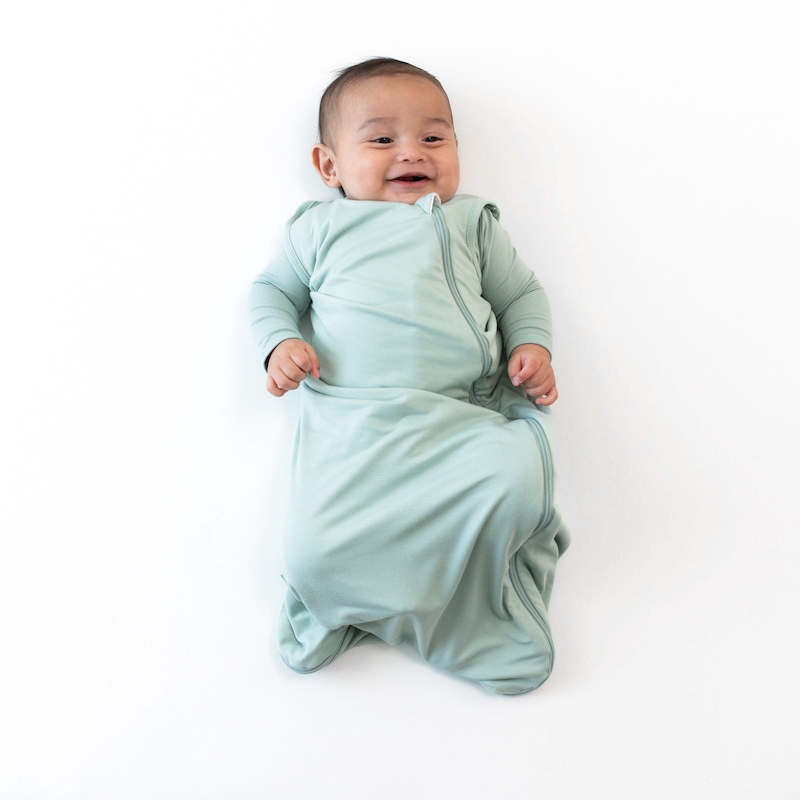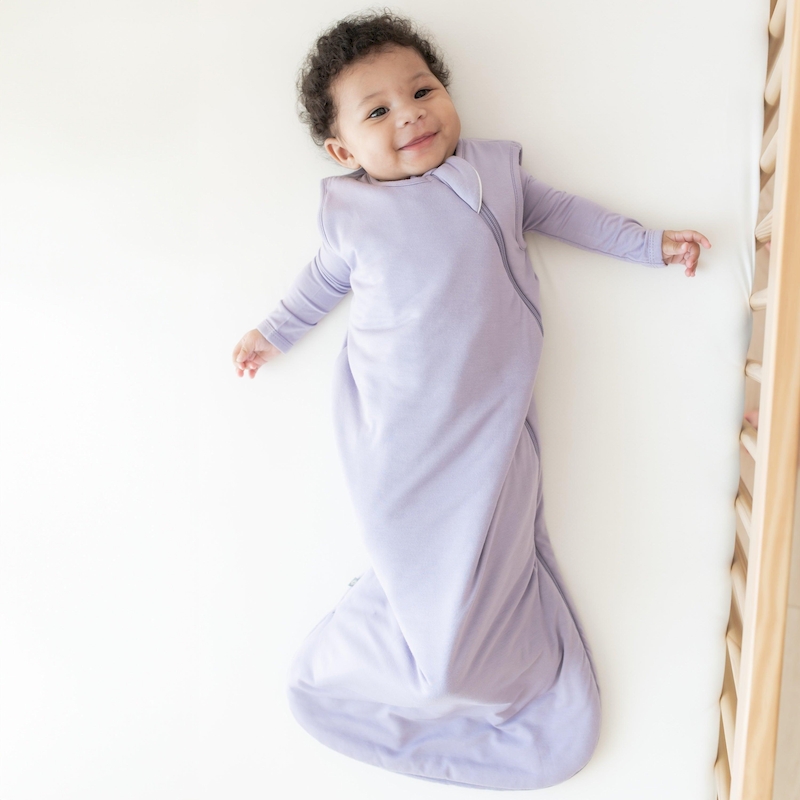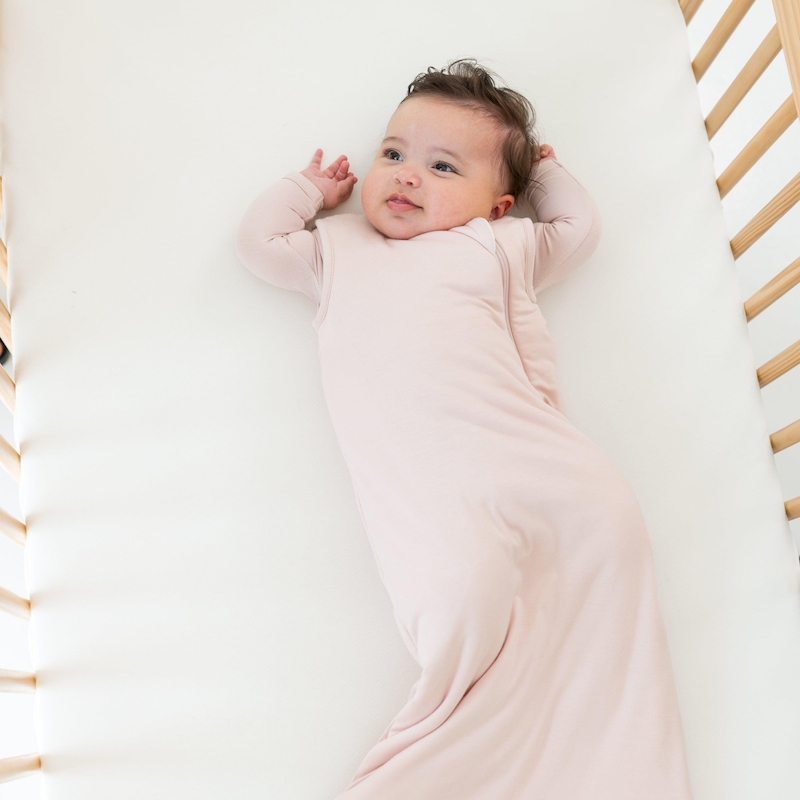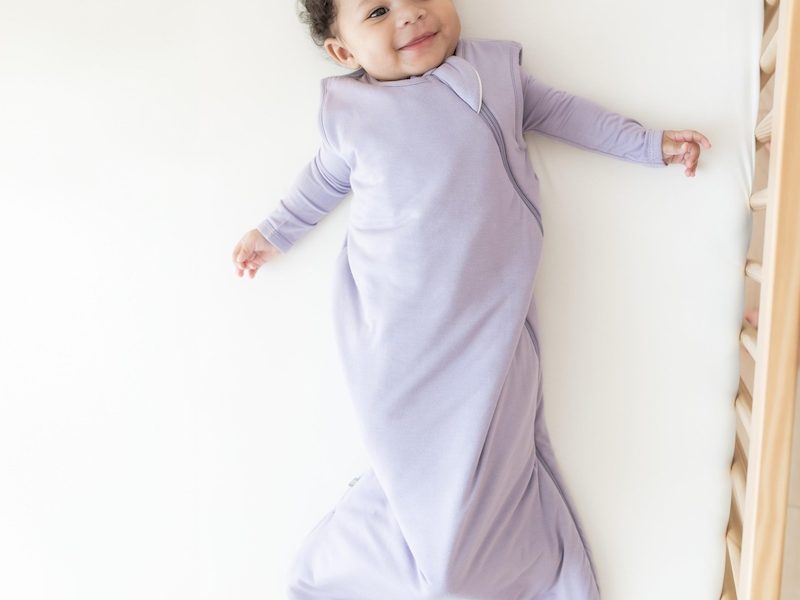As parents, ensuring a safe and comfortable sleeping environment for your baby is a top priority. One innovative solution that has gained popularity in recent years is the antibacterial baby sleep sack. Designed to promote restful sleep while minimizing exposure to harmful bacteria, these sleep sacks provide an added layer of comfort and safety. Unlike traditional blankets, sleep sacks allow babies to move freely while keeping them snug and warm. What’s more, the antibacterial features help in reducing odors and harmful germs, addressing parents’ concerns about hygiene and health. In this comprehensive guide, we will explore the benefits of antibacterial baby sleep sacks, understanding their features and how they differ from conventional sleep sacks. We will also cover safety tips, recommendations for choosing the right sleep sack for your baby, and insights into the importance of proper sleep hygiene. Whether you are a new parent looking to invest in quality sleep products or just curious about the latest trends, this guide will provide valuable information to enhance your baby’s sleep experience.
Understanding the Concept of Antibacterial Fabrics
Before delving into the specific advantages of antibacterial baby sleep sacks, it’s essential to understand the underlying technology and benefits of antibacterial fabrics.
What Are Antibacterial Fabrics?
Antibacterial fabrics are textiles treated with substances or woven with fibers that inhibit the growth of bacteria, fungi, and other harmful microbes. The goal of these fabrics is to provide enhanced hygiene by reducing the likelihood of infections and unpleasant odors. These fabrics can be particularly beneficial in items that experience frequent contact with skin, like clothing and bedding.
How Antibacterial Treatments Work
Antibacterial treatments can be applied to fabrics in several ways:
- Chemical Treatments: These involve coating the fibers with antimicrobial agents that actively kill or inhibit bacterial growth. Such agents can include silver ions and copper, known for their natural antibacterial properties.
- Natural Fibers: Some natural fibers, like bamboo or eucalyptus, possess inherent antibacterial properties. Fabrics made from these materials do not require additional treatment, making them a good choice for eco-conscious parents.
- Integrated Technology: Advanced fabric technology often combines various methods to create durable materials that maintain their antibacterial efficacy over time, even after washing.
Understanding how antibacterial fabrics work allows parents to appreciate the advantages they can provide in the context of baby sleep products and their impact on hygiene and comfort.
The Importance of Hygiene for Babies
Maintaining hygiene for babies is exceptionally crucial because their immune systems are still developing. Infants are more susceptible to infections and illnesses, making it essential for parents to take necessary precautions to create a safe sleeping environment. Antibacterial baby sleep sacks can help achieve this by reducing exposure to the bacteria and germs that accumulate in bedding and clothing.
Benefits of Antibacterial Baby Sleep Sacks
Now that we have an understanding of what antibacterial fabrics are, let’s explore the specific benefits of using antibacterial baby sleep sacks.
Enhanced Safety
Safety is paramount in baby products, and antibacterial baby sleep sacks contribute to a safer sleeping environment. By reducing the presence of harmful bacteria and fungi, these sleep sacks help lower the risk of infections, including common skin irritations and rashes that can develop from prolonged exposure to contaminated materials.
Improved Sleeping Conditions
Antibacterial sleep sacks can improve your baby’s overall sleeping conditions. These sleep sacks work to keep the fabric fresh and odor-free, ensuring a comfortable environment for your little one. Babies sleep better when they are comfortable, and antibacterial properties contribute to their comfort by minimizing potential irritants that could disrupt sleep.
Ease of Care
Parents appreciate products that require less maintenance, and antibacterial baby sleep sacks shine in this category. Many of these sacks can be machine washed, and their antibacterial properties often help resist stains and odors, making them easier to maintain than traditional sleep sacks. This feature is particularly beneficial for busy parents looking to streamline their laundry routine.
Temperature Regulation
Many antibacterial baby sleep sacks are designed with breathability in mind, helping to regulate your baby’s body temperature during sleep. Maintaining an optimal sleeping temperature is essential, as overheating can lead to discomfort and increase the risk of Sudden Infant Death Syndrome (SIDS).
Versatility in Use
Antibacterial baby sleep sacks are versatile and suitable for various occasions. They can be used in cribs, co-sleeping arrangements, or while traveling. Additionally, they are available in different sizes and styles, ensuring that you find the right fit for your baby’s needs.
Comfort and Freedom of Movement
Unlike traditional bedding that can bunch up or become entangled, sleep sacks provide a secure and comfortable fit that allows for safe movement. The design of sleep sacks ensures that babies can move their legs freely without the risk of rolling over or becoming tangled.
Considering these benefits, it’s clear that antibacterial baby sleep sacks offer significant advantages that create a healthier and more comfortable sleep environment for infants.
Choosing the Right Antibacterial Baby Sleep Sack
Choosing the right antibacterial baby sleep sack involves considering key factors to ensure that you select a product that meets your baby’s needs while prioritizing comfort, safety, and hygiene.
Size and Fit
When selecting a sleep sack, ensure that you choose the appropriate size. Most products are designed to fit specific age ranges, and it’s essential to select a size that accommodates your baby without being too loose or too tight. The right fit allows for optimal comfort and mobility.
Material Composition
Consider the materials used in the construction of the sleep sack. Look for products made of high-quality antibacterial fabrics, such as:
- Cotton: Soft, breathable, and hypoallergenic, cotton is often a preferred material for infant products.
- Bamboo Viscose: Known for its natural antibacterial properties, bamboo is moisture-wicking and incredibly soft against delicate skin.
- Polyester Blends: Some functional sleep sacks may contain polyester blends, which can enhance durability and maintain antibacterial properties.
Closure Types
Sleep sacks come with various closure types that determine ease of use:
- Zipper Closures: Zippers allow for easy on-and-off processes, making nighttime changes simpler while ensuring that the sack remains secure.
- Snap or Button Closures: These offer additional security and can be easier to manage during nighttime feedings.

Thickness and Insulation
Consider your baby’s sleeping environment when selecting the thickness and insulation of the sleep sack. If you live in colder climates, opting for thicker options that provide sufficient warmth is essential. Conversely, lighter options are suitable for warmer climates or during the summer months.
Additional Features
Look for extra features that enhance functionality:
- Folded Cuffs or Length Adjustability: Some designs offer foldable cuffs to keep your baby’s hands warm or allow for adjustability as your baby grows.
- Versatile Designs: Consider designs that can transition from swaddling to sleep sacks as your baby develops, offering longevity in use.
- Safety Certifications: Check for any safety certifications or testing to ensure that the product meets rigorous safety standards, giving you peace of mind while your baby sleeps.
By considering these important factors, you can choose the most appropriate antibacterial baby sleep sack that caters to your child’s comfort and safety.
Safety Guidelines for Using Baby Sleep Sacks
Using sleep sacks safely is crucial for ensuring that your baby remains comfortable and secure during sleep. Here are essential safety guidelines to follow:
Proper Usage
Always follow the manufacturer’s instructions when using any baby sleep sack. When properly utilized, sleep sacks should allow your baby to sleep safely while delivering the intended benefits.
Avoid Loose Bedding
Ensure that a sleep sack is the only item used inside your baby’s crib or bassinet. Loose bedding items, such as blankets or stuffed animals, can pose suffocation risks. Sleep sacks provide all the warmth a baby needs without the dangers associated with loose items.
Monitor Temperature
Keep an eye on your baby’s temperature while using a sleep sack. It’s vital to ensure they do not become overheated. Dress your baby in layers underneath the sleep sack, depending on the room temperature, and remove layers as needed.
Keep an Eye on Growth
Regularly monitor your baby’s growth and update their sleep sacks accordingly. A sleep sack that’s too small or tight may restrict movement, affecting comfort and complicating safe sleeping positions.
Conduct Routine Checks
Make it a habit to perform routine checks on the sleep sack for any signs of wear or damage. If the zipper is broken, if the fabric is tearing, or if there are any loose threads, replace the sleep sack immediately to avoid risks of accidents.
Stay Informed on Safety Guidelines
Stay updated on the American Academy of Pediatrics (AAP) recommendations regarding safe sleep practices. Following established safety guidelines ensures that you create the safest possible sleep environment for your baby.
By adhering to these safety guidelines, you can effectively utilize antibacterial baby sleep sacks while keeping your baby comfortable and secure during sleep.
Cleaning and Caring for Antibacterial Baby Sleep Sacks
To maintain the effectiveness of antibacterial properties, regular cleaning and proper care for baby sleep sacks are key. Here are critical steps to ensure your sleep sack remains in optimal condition.
Washing Instructions
Follow these general washing guidelines to preserve the quality of your antibacterial baby sleep sack:
- Check Labels: Always consult the care label for specific washing instructions, as various materials may have different requirements.
- Gentle Cycle: For most fabric types, use a gentle cycle with cold water to prevent shrinkage and damage.
- Mild Detergent: Select a mild, baby-safe detergent that is free from harsh chemicals, fragrances, or dyes.
Drying Recommendations
Proper drying techniques are essential to maintaining the integrity of the sleep sack:
- Air Drying: Whenever possible, air-dry the sleep sack by hanging it up or laying it flat. This method helps prevent shrinkage and retains fabric shape.
- Low Heat Settings: If using a dryer, choose a low heat setting to minimize the risks of fabric damage.
Preventing Odors
While antibacterial properties help reduce odors, residual moisture can lead to the development of unpleasant smells. Follow these tips to prevent odors:
- Ensure Full Dryness: Always ensure the sleep sack is fully dried before storing it away. Residual dampness can promote the growth of mold or mildew.
- Store in a Cool Environment: Store the sleep sack in a cool, dry space to minimize the risk of developing odors during long-term storage.
Regular Inspections
Inspect the sleep sack regularly for signs of wear and tear. Pay close attention to the seams, zippers, and fabric quality. If you notice any significant damage, promptly replace the sleep sack to ensure continued safety and functionality.
Replacement Timing
Although antibacterial baby sleep sacks are designed to last, they may wear out over time. Evaluate the condition and choose to replace them when necessary, typically when they show signs of excessive wear or when your baby has outgrown the sack.
By implementing these care and cleaning practices, you can effectively extend the life of your antibacterial baby sleep sack while ensuring it remains safe and effective for your child.
Transitioning Your Baby from Sleep Sacks
As your baby grows, there will come a time when transitioning from a sleep sack to a traditional blanket or sleepwear becomes necessary. Understanding how and when to make this transition is vital for ensuring a smooth adjustment.
Recognizing Readiness
While every baby is different, consider the following signs to help gauge readiness for transition:
- Mobility: If your baby is consistently rolling over and attempting to sit up, they may be ready to transition out of a sleep sack.
- Weight and Height Limits: Many sleep sacks come with age and size recommendations. If your baby exceeds these limits, it may be time to explore alternatives.
- Comfort with Other Sleepwear: If your baby is comfortable using light sleepwear, such as pajamas, they may be ready for a traditional blanket or similar option.
Gradual Transition
Transitioning from a sleep sack to another form of sleepwear can be daunting for both parents and babies. Here’s a gradual approach to aid this change:
- Try Shorter Sleep Sessions: Start by allowing your baby to take naps without the sleep sack while supervised. This method can help familiarize them with the new experience.
- Introduce a Safe Blanket: Once they seem comfortable, introduce a lightweight, breathable blanket into the crib. Ensure the blanket is safe and won’t pose suffocation risks.
- Maintain Comfort: Consistent bedtime routines and comforting environments can ease your baby’s adjustment to the change.
- Monitor for Disturbances: Keep an eye on your baby during the transition, ensuring they remain comfortable and safe throughout the night.
Establishing New Sleep Patterns
As your baby transitions away from sleep sacks, be prepared to foster new sleep routines.
- Encourage Independence: Allow your baby to explore moving around their crib while ensuring the sleep environment remains safe.
- Routine Consistency: Maintain bedtime routines that promote comfort and security, such as lullabies or gentle rocking.
- Positive Reinforcement: Celebrate their progress and encourage comfort with the changes through praise or cuddles.
By recognizing readiness and transitioning carefully, you can help your baby adjust smoothly from using sleep sacks to exploring new sleep options.

Conclusion
Antibacterial baby sleep sacks offer parents a valuable tool for ensuring their infants sleep safely and comfortably. With their unique properties that promote hygiene and protection against bacterial growth, these sleep sacks provide an unparalleled solution to common concerns associated with infant comfort.
By understanding the features, benefits, and maintenance requirements of antibacterial baby sleep sacks, parents can make informed decisions that contribute to their baby’s well-being. Paying attention to details, following safety guidelines, and implementing proper care routines will ensure the longevity and effectiveness of these products.
As your baby grows and transitions through various stages of development, choosing suitable sleep gear is essential. Investing in well-designed antibacterial baby sleep sacks ensures that your child enjoys a cozy, reassuring sleep environment, leading to better rest and overall health.
With the insights provided in this guide, parents are equipped to select the right antibacterial baby sleep sacks tailored to their needs, ultimately enhancing their baby’s sleep experience.



